Aussie Politicians Throw Easy Questions About RBA Gold
Following an 18 February RT.com article about the gold reserves of the Reserve Bank of Australia (RBA) claimed to be stored at the Bank of England, the Aussie central bank gold continued to hit the headlines later in the week (22 February) when a group of politicians on the Standing Committee on Economics of the Australian House of Representatives questioned the RBA governor and deputy governor about these gold holdings. This questioning was part of a public hearing by the Committee held in Sydney into the RBA’s 2018 Annual Report.
The RT.com article had looked into the fact that:
- there have never been any independent physical audits of the RBA gold in London
- that the last partial physical audit of the gold by the RBA was in 2013
- that the results of this 2013 audit were never released
- that the RBA has over the years lent out most if not all of its claimed gold over time
- that there have never been any proper gold bar weights lists published about the RBA gold nor any details of any gold lending transactions
- and that the RBA gold could easily be stored in Australia without the need to keep storing it in London
The background to this RT.com article is based on extended Q & A which I provided to RT.com, see 18 February BullionStar article here and also posted on ZeroHedge here, and is based on FOIA requests submitted by Joseph Skewes in February 2014 and October 2014 which led to an FOIA release by the RBA in July 2014 of a partial but obscured gold bar list, and an FOIA release in December 2014 of some redacted details about an RBA gold audit conducted in 2013.
But in what was a huge missed opportunity for the Australian politicians to actual ask some tough and probing questions about the Australian gold reserves stored abroad (as was detailed in the RT article), the Australian Standing Committee on Economics gave the RBA governor and deputy governor an easy ride, let them off the hook, and incredibly, could not come up with even one decent question. Despite this, the RBA bosses squirmed and paused, and the whole session degenerated into an at times hilarious farcical chatter reminiscent of a bunch of Aussie mates having a Friday evening drink.
Since the only way to really convey this is by looking at the hearing transcript about the gold reserves (pages 24-26), the relevant parts of the transcript are included below (in italics).
Committee ‘Chair’ in the transcript refers to Tim Wilson MP, Liberal Party of Australia, ‘Mr Josh Wilson’ is committee member Josh Wilson, Australian Labor Party, and ‘Mr Keogh’ refers to committee member Matt Keogh, Australian Labor Party (Committee members here). In the transcript, ‘Dr Lowe’ refers to RBA governor Philip Lowe, and ‘Dr Debelle’ refers to RBA deputy governor, Guy Debelle.
The relevant parts of the transcript begin as follows:
CHAIR: When was the last time the RBA did an audit of Australia’s gold holdings?
Dr Debelle: We intend to do our next one this year.
CHAIR: Physical?
Dr Debelle: Yes, a physical audit.
CHAIR: When was the last one?
Dr Lowe: In 2013. We have 80 tonnes of gold, which has a market value of $4 billion, and it is stored for us very safely at the Bank of England.
Straight off the bat, RBA’s Debelle avoids answering the Chair’s question with an evasive answer, and the Chair is forced to ask the question again. Lowe the Governor than chimes in seemingly needing to stress how safe the gold is in London. Given that its a question about an audit and not about storage, is Lowe trying to hide something? The RBA is the gold storage customer (and agent to the Australian government), the Bank of England is the custodian. The customer agent should not be apologising on behalf of the custodian and claiming how safe the custodian is.
CHAIR: Why do we store it at the Bank of England?
Dr Debelle: The gold market, as you may know, is centred in London—it has been for a few centuries.
CHAIR: I want to tease this out.
Here yet again, deputy governor Debelle avoids the question and evades a proper answer, forcing the Chair to want to ‘tease it out’.
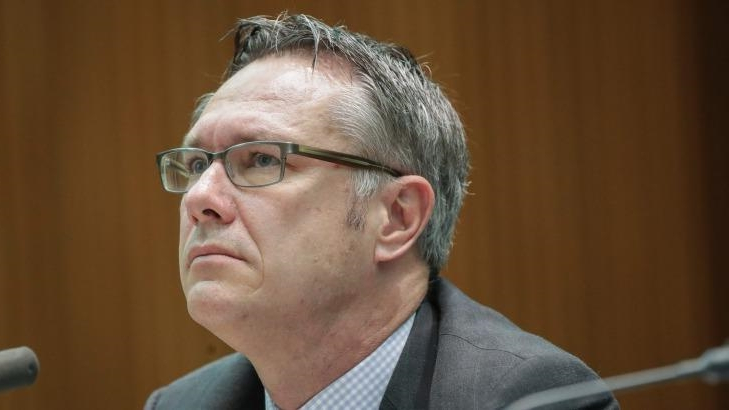
Dr Debelle: Outside of Fort Knox, literally, and a few other places, most of the world’s gold holdings are in London because that’s where the bulk of the transactions occur. We haven’t transacted in gold for a long time now, but the bulk of the transactions occur there, and the bulk of the storage of the physical gold is there. It’s actually in, basically, two or three sites, one of which is the Bank of England’s and the other one JPMorgan’s. In terms of ease of transaction and shifting of ownership—not that we intend to be doing that—that’s why it’s in London and has been so for a very long time.
Not surprisingly, everything said by Debelle in the above section is inaccurate. Most of the world’s gold holdings are not in London. Central banks together claim to hold 33,000 tonnes of gold. According to the Bank of England, there are only 5000 tonnes of gold in its vaults. The Fed gold vault in New York claims to hold far more with over 5,700 tonnes of gold. Mentioning Fort Knox is a joke and it lacks credibility. Fort Knox has never been properly audited, and besides, even mentioning Fort Knox undermines Debelle’s argument since all US Treasury gold is stored domestically on US soil and not in London.
Debelle argues that “the bulk of the transactions occur" in London, then shoots himself in the foot by saying that ‘we haven’t transacted in gold for a long time now". So why the need for to store the RBA gold in London? Furthermore, Debelle’s claims of not having transacted in gold a long time is itself not true, since the RBA has had gold out on loan every year for the last 20 years, including in 2018, i.e. gold lending transactions.
Debelle’s claim that “the bulk of the storage of the physical gold" is in London is also simply not true. Apart from the FRBNY and the US Treasury, the Russian central banks stores all its gold in Russia (more than 2,100 tonnes), the Chinese store their gold in Beijing (more than 1850 tonnes), the Taiwanese gold is in Taiwan )more than 420 tonnes), and German Bundesbank stores more than 1600 tonnes of gold in Frankfurt, the Bank of Italy has more than 1200 tonnes of gold in Rome and nearly 1000 tonnes in New York, the Banque de France stores over 2,200 tonnes of its own gold in Paris.
The IMF stores its gold (more then 2800 tonnes) across four depositories globally, the ECB holds its gold (more than 500 tonnes) across five vaults in five countries. The Swiss National Bank stores over 70% of its gold (equating to more than 700 tonnes) in its vaults in Berne in Switzerland. These are all simple facts. Nothing Debelle says is accurate, and hilariously, the Aussie Economics Committee just sits there and does not pull Debelle up on even one of these points.
JP Morgan – A Finger in every Pie
Debelle then mentions JP Morgan’s gold vault in London. This gold vault (see BullionStar profile of vault here) is under a JP Morgan building in the City of London on John Carpenter Street and Carmelite Street, and is known to store sovereign gold such as the gold of Azerbaijan. Why does Debelle mention this JP Morgan vaults? Is the RBA familiar with this JP Morgan vault? Is the RBA gold out on loan with JP Morgan in London?
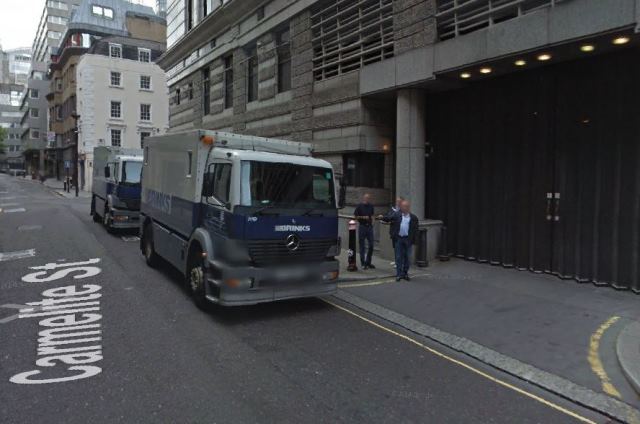
Hilariously, Debelle then digs himself even further into a hole saying that “in terms of ease of transaction and shifting of ownership- not that we intend to be doing that – that’s why it’s in London". “Not that we intend to be doing that"? But they are already shifting ownership title through gold lending. Just look at Venezuela and Citibank on who has ownership and title.
Gold Audit explanation – Kindergarten Style
The Chair then moves on to ask the RBA’s Lowe and Debelle about auditing the gold in London, but again fails spectacularly in asking any real questions and the questions descends into farce:
CHAIR: Just to clarify: when was the last time we did an audit of it?
Dr Debelle: 2013.
Dr Lowe: 2013, and the next one is due in June this year.
Dr Debelle: Sorry, that’s in terms of auditing by actually going in and—
CHAIR: Counting—one, two, three, four, five, six?
Dr Debelle: Or prodding. Weighing, actually, is relevant there too. Counting only gets you so far. You’re actually at least as interested in the weight as you are in the number. If you think about the assets that we hold in our reserves, we have a whole bunch of US treasuries. We audit them from a financial point of view as part of our annual accounts, and we do the same to the gold from a financial point of view. That is audited every year as part of a—not just by us.
CHAIR: But the physical inspection—
Dr Debelle: The actual physical—
CHAIR: is, what, over seven years?
Dr Debelle: No, six years, actually.
CHAIR: Every six years.
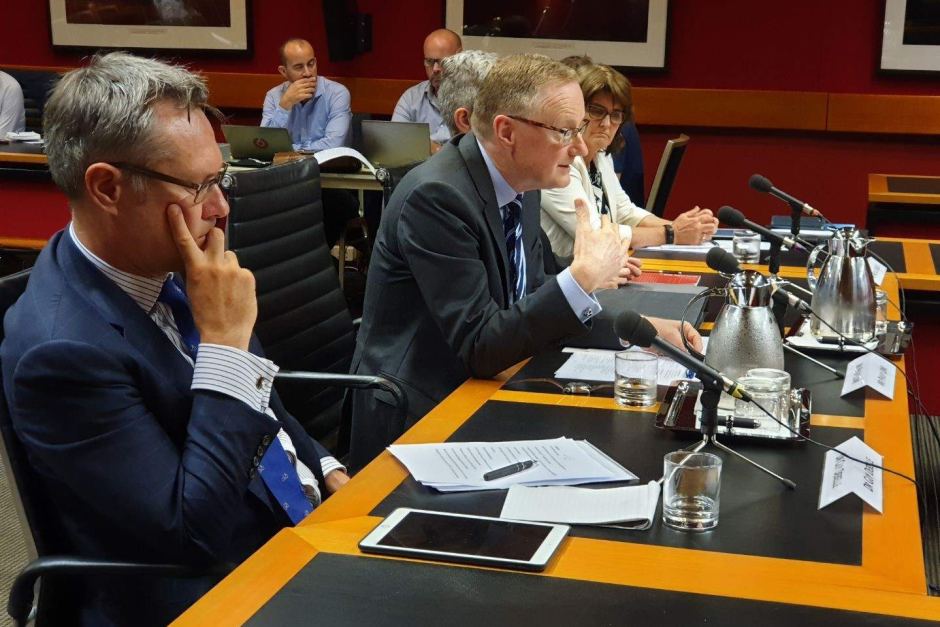
A quick 10 minute reading of the FOI release about the 2013 gold audit by the RBA in London would have allowed the Chair, Tim Wilson, to see the following:
- The 2013 gold audit by the RBA was not a full audit, It was only a partial audit that inspected a random sample of gold bars
- The gold audit was not publicized in advance and details abour it only came into the public domain through a redacted FOIA release
- The results of the 2013 audit were never made public
- The FOIA emails and correspondence that the RBA did release were heavily redacted without any details of how many gold bars were selected and what the sample size was
- The RBA gold audit did not follow any generally accepted gold audit standards such as the gold audits conducted on the SPDR Gold Trust (which also holds its gold in London).
- The SPDR Gold Trust (GLD) has annual physical gold audits of all of its gold holdings (nearly 800 tonnes) which is 10 times more gold than the RBA holds.
- Up until July 2013, the RBA didn’t even have formal ‘gold safe-custody arrangements’ in place with the Bank of England, as the FOI release shows.
Debelle and the Chair then continue their chatter about the audits, but there is no questioning of why an RBA audit is only done every 6 years:
Dr Debelle: We were the first country that the Bank of England- you can debate this with them- allowed to audit their gold stocks, and then subsequently everyone else has joined that bandwagon, and now it’s back to us again.
What the Chair fails to realise and what the RBA bosses failed to tell the Chair is that other central banks conduct gold audits at the Bank of England more regularly. For example, the Danish central bank, Danmarks Nationalbank, conducted a gold audit at the Bank of England in March 2014 and then the Danes conducted another gold audit at the Bank of England in October 2018. That is two audits by the Danes since the 2013 RBA audit, i.e. 2 audits in 4.5 years. Why does it take a huge 6 years for the RBA to do another audit? Is the gold actually there and why was a 2nd audit not undertaken before the 2nd Danish gold audit?
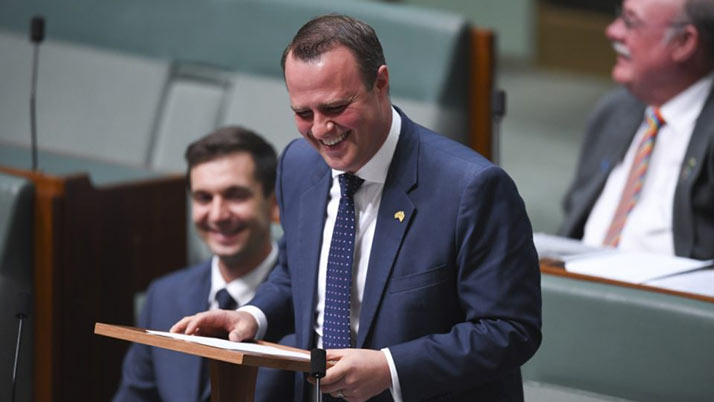
CHAIR: For clarity: when the audit was done, was there any discrepancy between what we thought we held and what we actually held?
Dr Debelle: No.
CHAIR: It was exactly the same?
Dr Debelle: Yes.
Here again, the Chair fails in his responsibility to ask any proper questions such as ‘why were the results of the 2013 audit were never made public?" and “why were the FOIA emails and correspondence that the RBA did release heavily redacted without any details of how many gold bars were selected and what the sample size was?"
Gold Lending for Dummies – And they still don’t get it
The hearing then moves on to gold leasing (aka gold lending), starting with a misleading answer from Debelle:
CHAIR: Do we engage in gold leasing?
Dr Debelle: Yes.
CHAIR: Can you explain to me why?
Dr Debelle: To add a rate of return to the reserves that we hold on the part of the Australian people, which flows pretty much straight through to you, the parliament. Gold, if you just leave it sitting there, unlike a treasury bond, for instance, earns no rate of return, whereas a bond does. A way of delivering a slightly larger rate of return- it’s not that large at the moment, but it’s positive – on those holdings of gold is to lease it for periods of time.
Here, Debelle seems to be acting clueless as to the primary reasons why central banks hold monetary gold as part of their strategic reserve assets. And Debelle also misleads by comparing gold to a debt instrument – a government issued treasury. Maybe Debelle should ask the Russians or the Chinese why they hold gold, or maybe even read a Bank of England discussion paper on gold from 1988 which explained in simple terms why central banks hold gold, i.e.:
There are three principal reasons why countries wish to retain an element of gold in their reserves:
(a) as the ultimate store of value, the “war chest” argument;
(b) as an alternative investment to holdings of currencies and other reserve assets;
(c) as an insurance against gold resuming a central role in the international monetary system.
What Debelle also doesn’t say is that the weighted average effective interest rate on gold lending during 2018, according to the RBA 2018 annual report, was a ridiculously low 0.15%. What Debelle does not say is that gold lending involves counterparty and credit risk. He also doesn’t talk about collateral, he doesn’t mention the identities or credit ratings of the bullion bank counterparties, and he doesn’t mention the following line in the 2018 annual report which refers to borrowers with government support i.e. “The lending is either fully collateralised or the borrower has government support“. A bullion bank borrower with government support. What kind of gold lending is this?
The Chair of the Economics Committee, Tim Wilson, who lets not forget is supposed to be chairing a public hearing into the RBA 2018 annual report, also fails to even ask a basic question about the interest rate on the effective interest rate on the gold lending or who the counterparties to the gold lending deals are. You couldn’t make this up.
The transcript continues, degenerating into the twilight zone with moronic, hilarious and at times embarrassing interchanges:
CHAIR: Just for clarity: do we lease gold?
Dr Debelle: Yes.
Mr JOSH WILSON: We don’t borrow it; we lease it.
Dr Debelle: No, we own it.
Mr JOSH WILSON: We lease it out?
CHAIR: We lease it out, but we don’t lease gold in.
Dr Debelle: Yes.
Mr KEOGH: It doesn’t actually move anywhere, does it?
Dr Debelle: No, that’s the other thing. The other point I was going to make is that—
Mr JOSH WILSON: We’re the lessor.
Dr Debelle: in those gold vaults, when people buy and sell gold, by and large the gold never goes anywhere. It doesn’t even necessarily get moved around too much, because every time you move gold you can lose a bit of it. I mean that literally—the gold dust.
Mr KEOGH: It weighs less?
CHAIR: How do you lose it when you move it?
Dr Debelle: Little bits—
CHAIR: Fragments? Ounces?
Dr Debelle: absolutely minute fragments, come off. However, the storer of the gold has the obligation to make that good to the owner of the gold, so the weight of our gold is always what we own. What I mean is that they minimise the number of times they move the gold.
The discussion, apart from being infantile, is misleading. Here again, Debelle misleads the Committee. A lot of the time in central bank gold lending, the gold does move out of the vault. It moves out and is sold and is shipped to Switzerland and refined and recast from 400 oz gold bars into 1 kg and 100 gram gold bar and flown to India and China. Does Debelle not know this? The gold changes title and the central bank only has a claim to the borrowing bullion bank for the same quantity (fine ounces) that it lent. The talk about fragments and gold dust is just ridiculous and is not even worth commenting on.
I’ll get back to you on that, mate
The transcript goes on to a discussion of storage costs, where unbelievably neither the RBA governor or deputy governor knows the annual storage costs of the claimed 80 tonnes of RBA gold, a claimed quantity in storage which hasn’t changed in over 20 years. Even a retail guy storing a few gold coins or a few small gold bars with a 3rd party storage provider will be able to tell you the annual cost of his gold storage in terms of basis points and dollar cost. Here we have RBA heads who are responsible for 80 tonnes of gold worth nearly $4 billion, and they don’t know how much it costs to store the gold per year. Even children who visit the Bank of England Museum in London will be able to tell you how much it costs per night to store one 400 oz gold bar in the Bank of England gold vaults. Because it says so in the Bank of England Museum.
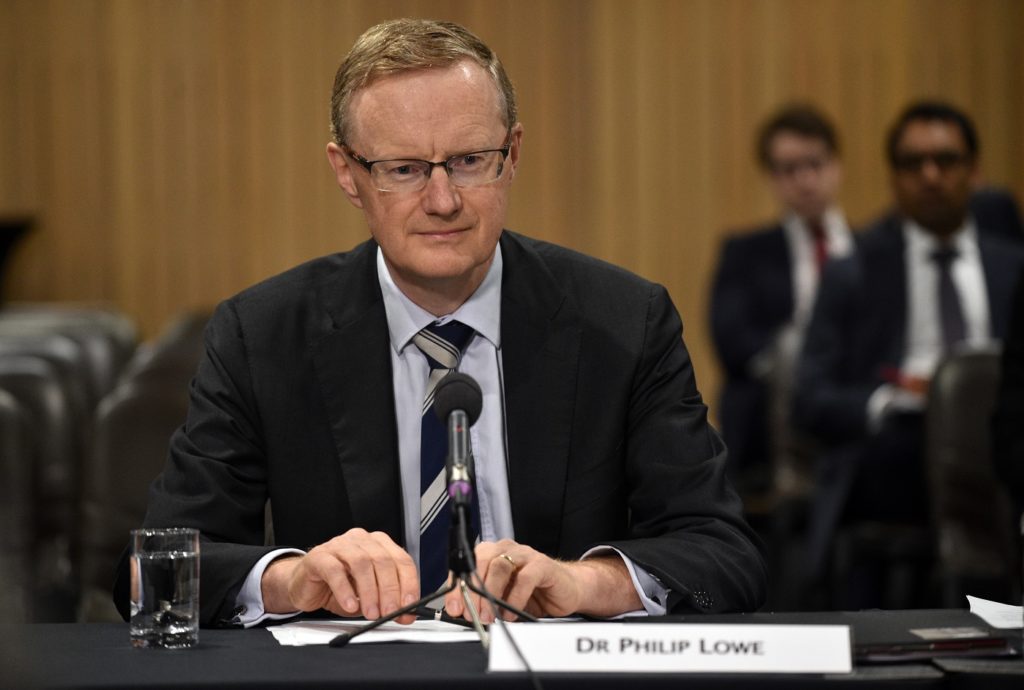
The transcript continues:
CHAIR: Understood. The next audit is next year. How much are we charged on an annual basis to store the gold?
Dr Debelle: I will have to take that question on notice. I can’t remember
Dr Lowe: I do know we earned three-quarters of a million dollars last year from the leasing, and that got returned to the taxpayer.
Dr Debelle: Can I come back to you on the cost for the storage?
CHAIR: Yes.
Mr KEOGH: Presumably we earned more than it costs to store.
CHAIR: That’s why I’m asking.
The discussion moves on to why the Aussie gold is not stored in Australia. At no time does anyone on the Economics Committee ask the RBA heads why many other countries hold the majority of their gold domestically, such as the US, Italy, France, Portugal, Russia, China, or why the Bundesbank, the Netherlands central bank, and the Austrian central bank, all decided to collectively move 1000s of tonnes of gold back to their own countries in teh last few years, or why late last year in 2018, the Hungarian central bank moved all of its gold back to Hungary from London. To this list you can probably now add the central bank of Romania, which now looks to be preparing to move its gold back from London (over 60 tonnes).
At no point do any of the Economics Committee members ask the RBA heads about the 50 tonnes of gold belonging to the Venezuelan central bank that the Bank of England has frozen in London, and what that means for the international legality of central bank gold custody contracts with the Bank of England. The transcipts wraps up with absolutely nothing of value learned by the Committee about the Australian gold:
Dr Lowe: If it weren’t stored at the Bank of England, we’d have to store it here in our vaults, and there’d be extra guarding. It’s quite efficient to store most of the world’s gold in one spot. We used to do that.
Dr Debelle: Yes, but we did make the assessment, back in the day, that actually it was cost-effective to store it there, because in gold storage there are some economies of scale.
CHAIR: There would be economies of scale. I imagine also that there are ceiling costs in moving it as well—
Dr Debelle: Indeed.
CHAIR: if we were to ship it here or anywhere else.
Dr Debelle: Yes.
Dr Lowe: And if we have to store it here in Martin Place or at some other location. So there’d be costs associated with that.
Dr Debelle: But we can come back to you on the exact cost.
CHAIR: Yes, I’d like that—thank you, very much. We don’t have any intention to purchase more gold?
Dr Lowe: No. As I said, we’ve got 80 tonnes—
Dr Debelle: Two thousand and three—
Dr Lowe: We’ve had 80 tonnes for quite a while and I don’t intend to either buy or sell—just to lease.
CHAIR: Okay
The discussion of the gold (in the transcript) ends here.
SMH cheerleaders
To add insult to injury, one of Australia’s broadsheet newspapers, the Sydney Morning Herald (SMH), covered the above public hearing gold discussion in a same day article on 22 February, but the SMH article just served as a mouth-piece echoing the RBA’s disinformation. The SMH article, ridiculously titled “Australia’s gold … safely in the hands of the Bank of England" did not even look into any of the claims made by the RBA but simply repeated them, like a royal court lackey.
What Debelle is referring to in the 2nd last line of the transcript above with the comment ‘two thousand and three’ (2003) is not clear, but Lowe quickly interjects saying that they have had 80 tonnes for quite a while. What happened in 2003? Were there other under the cover dealing with the RBA gold in that year?
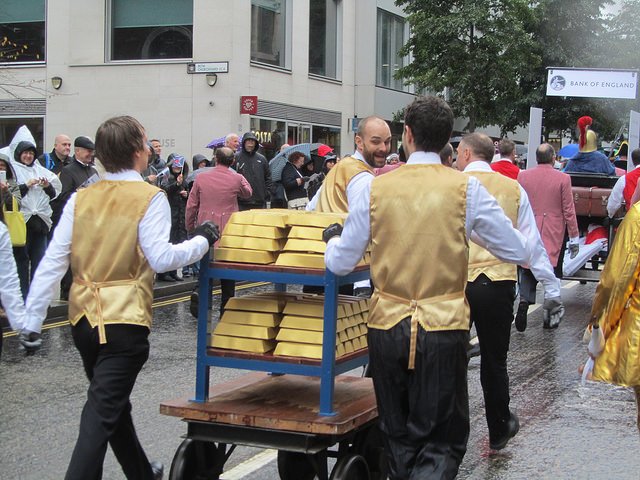
Conclusion
The RBA had 247 tonnes of gold in late 1996 and then went on a gold selling spree, selling off 167 tonnes of Australian gold at rock-bottom prices during the first half of 1997, just before the gold price began its bull run from 2000 to 2011. This was one of the worst investment (or disinvestment decisions) Australia ever made and was undertaken by the then RBA governor Ian Macfarlane and then treasurer Peter Costello. See article from The Australian, dated 11 January 2011, “Reserve Bank’s gold sale cost us $5bn“.
While the RBA wrote a discussion paper in December 1996 trying to find justifications to sell the Australian gold, according to various accounts the real reasons the RBA sold the 167 tonnes of gold were to either boost a fiscal surplus for the Howard government, or to prevent a run on the AUD during the 1997 Asian financial crisis.
So from 247 tonnes of gold in late 1996, to 80 tonnes of gold in mid 1997. And now fast forward to 2019, the Australian public does not even have any evidence that this 80 tonnes of Australia’s gold is actually being stored in London. The RBA has not even published the audit report from 2013, as according to the RBA it “would, or could reasonably be expected to, cause damage to’ the relationship between the RBA and the BoE“. There is no proper weight list of this 80 tonnes of Australian gold in the public domain, again because, the RBA and Bank of England do not want anyone knowing the serial numbers of any of the gold at the bank of England as this would blow up the BoE’s gold lending scheme.
So Australia , one of the great gold producing nations of the world, famous for its gold rushes and its gold mines, sits back and allows its central bank heads to avoid answering questions posed by what can only described as lazy and uninformed politicians who do not want to know anything of substance about the Australian gold in London. A whitewash if ever there was one.
Popular Blog Posts by Ronan Manly
 How Many Silver Bars Are in the LBMA's London Vaults?
How Many Silver Bars Are in the LBMA's London Vaults?
 ECB Gold Stored in 5 Locations, Won't Disclose Gold Bar List
ECB Gold Stored in 5 Locations, Won't Disclose Gold Bar List
 German Government Escalates War On Gold
German Government Escalates War On Gold
 Polish Central Bank Airlifts 8,000 Gold Bars From London
Polish Central Bank Airlifts 8,000 Gold Bars From London
 Quantum Leap as ABN AMRO Questions Gold Price Discovery
Quantum Leap as ABN AMRO Questions Gold Price Discovery
 How Militaries Use Gold Coins as Emergency Money
How Militaries Use Gold Coins as Emergency Money
 JP Morgan's Nowak Charged With Rigging Precious Metals
JP Morgan's Nowak Charged With Rigging Precious Metals
 Hungary Announces 10-Fold Jump in Gold Reserves
Hungary Announces 10-Fold Jump in Gold Reserves
 Planned in Advance by Central Banks: a 2020 System Reset
Planned in Advance by Central Banks: a 2020 System Reset
 Gold at All Time Highs amid Physical Gold Shortages
Gold at All Time Highs amid Physical Gold Shortages






 Ronan Manly
Ronan Manly 0 Comments
0 Comments










